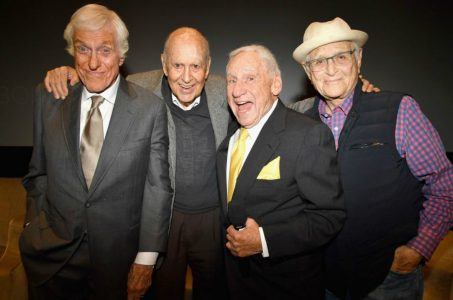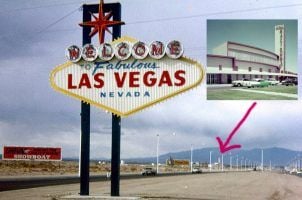Las Vegas’ Moulin Rouge Property Sold, Hope Remains to Honor History
Posted on: December 9, 2020, 04:53h.
Last updated on: December 9, 2020, 01:54h.
Las Vegas’ long-vacant Moulin Rouge gaming property may soon be the site of a revived gambling venue. Before its demise, it was once the sole desegregated, upscale casino in Southern Nevada.

Last month, a local judge approved the sale of the historic property. The new owner is RAH Capital. That entity is a new firm based in Nevada.
RAH paid $3.1 million for the 11.3-acre site, according to the Las Vegas Review-Journal. New owners plan to place a casino on the vacant lot. RAH is associated with an Australian-headquartered financial firm, BBC Capital. Last month, Clark County District Court Judge Elizabeth Gonzalez approved the sale of the property to BBC Capital.
Under the agreement, RAH Capital has to take over $2 million in liens. The firm gets an active, non-restricted gaming license from the state of Nevada.
The property takes its name from the original Moulin Rouge cabaret, which is still found in Paris. Launched in the 19th Century, it is best known as the birthplace of the modern can-can dance.
First Racially Integrated Casino
Inspired by the Paris cabaret, Las Vegas’ Moulin Rouge opened in 1955. It was the first upscale, integrated casino, where guests and performers of any race were welcome.
For the first time, African Americans could enjoy entertainment in a space of elegance denied to them previously,” Claytee White, director of the Oral History Research Center at UNLV and an expert on Las Vegas’ Black history, told Casino.org.
The late-night performances attracted entertainers and high rollers alike, including Nat King Cole, Duke Ellington, and Frank Sinatra.
The Moulin Rouge featured the first line of Black dancers, many Black entertainers, and “an audience peppered with Hollywood royalty,” White recalled. These racially diverse performers led to national attention. Its dancers were depicted on the June 20, 1955 cover of Life magazine.
During the post-World War II period of segregation, the Moulin Rouge also provided housing for Black entertainers who found little options other than living in Westside boarding houses.
Nat King Cole, Pearl Bailey, Sammy Davis, Jr., and other stars were not allowed to stay at hotel-casinos on The Strip where they performed to adoring white audiences,” White said. “These entertainers entered through the kitchens of the Sands, Desert Inn, Stardust, and Flamingo, just like Blacks who worked in housekeeping.”
Back then, Las Vegas “was two separate spaces, separate worlds. Separate and unequal,” White added.
Tough Financial Times
Initial funding for the Moulin Rouge came from such investors as legendary boxer Joe Louis. But tough finances forced the Moulin Rouge to close after less than a half year of operation.
Some of the other casinos, such as the Dunes and Royal Nevada, were struggling then, too, but got assistance to make it through.
“None of the other hotels came to the aid of the Moulin Rouge, thus the heyday ended,” White said. The Moulin Rouge was shuttered by the local sheriff’s office for non-payment of contractors.
Eventually, the Moulin Rouge re-opened. But the venue fell short of his cultural heyday seen in 1955.
Site of Historic Civil Rights Meeting
The property was also significant in the civil rights history of Las Vegas. On March 26, 1960, it hosted a meeting “that hammered out an agreement to integrate public accommodations on the Las Vegas Strip and downtown,” White said.
She noted that the initial agreement failed to resolve many issues. In 1971, a legal consent decree was brokered to open jobs to Blacks in the front of the house.
Later, the Moulin Rouge got listed on the National Register of Historic Places. But multiple fires left the abandoned site in a state of disrepair.
In recent years, several leaders and activists in Las Vegas’ Black community urged that something be placed on the site. Many were hoping for local owners. Many also wanted to find a way that the precious history of the Moulin Rouge and West Las Vegas could be presented to the public.
“I think it is good that the property will be reinvented,” White concluded when asked this week about the sale of the Moulin Rouge parcel. “But unfortunately, the history of the location will probably not be honored.”
Related News Articles
Hengqin Island Family Attraction Launches Across from Macau Gambling Hub
Donny Osmond, Minus Marie, Returns to Las Vegas Strip
Most Popular
FTC: Casino Resort Fees Must Be Included in Upfront Hotel Rates
Genovese Capo Sentenced for Illegal Gambling on Long Island
NBA Referees Expose Sports Betting Abuse Following Steve Kerr Meltdown
UPDATE: Former Resorts World & MGM Grand Prez Loses Gaming License
Most Commented
-
UPDATE: Whiskey Pete’s Casino Near Las Vegas Closes
— December 20, 2024 — 30 Comments -
Caesars Virginia in Danville Now Accepting Hotel Room Reservations
— November 27, 2024 — 9 Comments -
UPDATE: Former Resorts World & MGM Grand Prez Loses Gaming License
— December 19, 2024 — 8 Comments -
FTC: Casino Resort Fees Must Be Included in Upfront Hotel Rates
— December 17, 2024 — 7 Comments
















Last Comments ( 3 )
@Jason, Truth. The Moulin Rouge's failure was that it was such a success and that was a threat. Ahhh, the good ol' days. :( It's shameful to read that the history of the property will likely not be honored by the new owners in its reinvention. I hope that turns out to not be the case. It's legacy deserves better. Las Vegas deserves better.
Chris, from what I've heard about the Moulin Rouge, yes it was a failure, but that was because of its success. Black success at the expense of white folks money wasn't going to be tolerated. The top black performers would do their set at the casinos on The Strip, but they couldn't stay at the hotels on The Strip. So they would stay at the Moulin Rouge and they'd do late night sets. Many people who were staying on The Strip would follow the performers to the Moulin Rouge for those late night sets. The Moulin Rouge was making a lot of money off of that, but it upset the major casinos on The Strip because a lot of money was going out the door and heading to a black casino. The folks that ran Vegas weren't about to let the continue, so they pretty much sabotaged the Moulin Rouge.
Significance of this operation is way over dramatized in this blog as it was a huge business failure. The casino closed within months for lack of business and remained a shuttered eyesore for decades until being demolished.